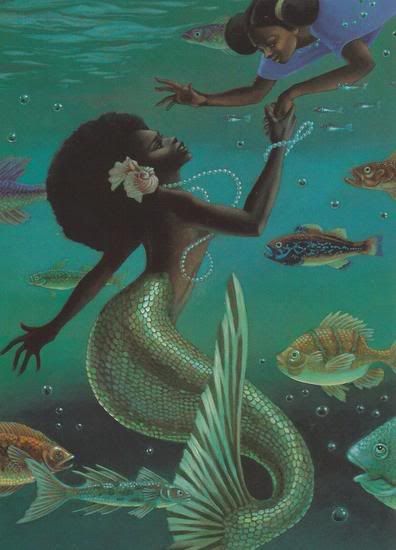
Ummmm...each day I am looking forward to writing this blog - it has been so helpful for me. It has help to release a creative side that was buried for too long and it has helped me to express my truth...
Below is my new poem (still in progress) that is introducing a beautiful essay by my nephew Kweku Opare. He is a brilliant artist, writer and visionary. This a piece a final paper he wrote for school.
Peace,
Sistah C
WombMother (still a work in progress…)
When my Mother conceived me,
she was pregnant with
9
Or was it 90?
maybe 9000??
yes, 9 million like me…
See many of you didn’t know I came from the sea…
A strange mixture of salty tears,
embryonic fluid and
blood that is clear…
I was breed to never fear…
mortal men,
for this human form can never truly hold me,
I will tell you a secret…
I was born from the sea…
Yes, my mama conceived me and placed me in the womb
of a barren woman, desperate for a child…
she was sworn to feed me,
sworn to clothe me,
sworn to house me,
but was told she could never really love me
because I am my mother’s child,
born wild, born free…
my home is wata
since I was a wee bit chil’
a pretty strange
fish-a-funk-a-phile
Many man fall in love with me,
but none live up to me,
cause I am not the daughter of
a long haired man turned
prophet at King James’ hand,
no, I was never the daughter of such a man…
Some seek to silence me,
Try mix my story with lies
but my mother watches over me
and will allow no harm to
come to me…
she protects and
guides me
cause I am her child from the sea...
Sistah C
READ THIS BEAUTIFUL ESSAY BY KWEKU OPARE
A Mystical World of Spirit Submerged
Iba Olokun fe mi lo're. Iba Olokun omo re wa se fun oyi o.
I praise the Spirit of the vast Ocean. I praise the Spirit of the Ocean who is beyond understanding.
In my personal experience, I have always been fascinated with water spirits, specifically mermaids. In learning more about the culture and practices of my ancient ancestors, I have learned that many of the legends of mermaids come from African spiritual beliefs. These beliefs and legends have been transmitted all over the world, and are based in real life experiences and traditions. These legends of water spirits help to spiritually inform me about deeper concepts my ancestors were able to realize. The alluring water spirits of African and African Diasporic cosmology, pantheons and folklore amazingly personify the concept of creation and ancient knowledge.
Water is the source of life on Earth. Therefore, in traditional African cultures spirits were associated with bodies of water. These spirits, whether drawn as a grand mermaid or an ancient, humongous fish, represented concepts associated with the sacred importance of water. One example is the concept of creation; the Earth can be believed to have once been covered entirely in water. Life then proceeded to evolve from the depths of the ocean, which is believed to be a mother figure in many traditions. Specifically, the mermaid can be a physical representation of this theory. This example is well expressed in this following quote from the Danbala Wedo Vodou Society website (referring to the water spirit Lasiren):
La Siren is considered to be the "Mother of the Sea". Since she is the mother of the world, her children are too many to count - not unlike the fish who inhabit her domain of the sea. Science shows us that life began in the oceans of the world. And, as a fetus, we wade for nine months in our mother's womb. Therefore calling the Ocean our Mother is not all that far fetched - a large body of salt water, rolling and moving with the tides. Not unlike being rocked in the womb of our mother. And, just as early life evolved out of the oceans, we too must change from little fish-like fetuses into human beings at birth. We come from the waters and manifest ourselves into the reality of our world. This can be seen as an allegory of LaSiren, who brings her initiates knowledge from beneath her watery domain, helping them manifest their desires. (“Lwa of Our House”, par. 5)
Overall, the concept of the mermaid can be linked to the theory of creation, and the imagery of the ancient mermaid in African art makes that metaphysical idea visual. The visual representations of spiritual notions breathe life into the idea of the water spirit. The correlation between water and creation is magnified by the magical expressions of water deities in African spiritual systems and cosmology.
In the cosmology of Africa and the African Diaspora there are many examples of water spirits and divinities. Generally speaking, majority of the traditional spiritual systems of Africa and the African Diaspora are consistent in their values and ideology. Because of this, the idea of the water spirit is similar in interpretation and symbolism across the world. Mami Wata is a water spirit (and also a pantheon of deities) who is very popular across the continent of Africa and the Americas. She is an ancient mermaid considered to be foreign to all cultures, and her visual manifestation in art is based on a collection of images from Africa, Asia and Europe. According to Henry John Drewal, “Mami Wata is a varied, complex, and fully expressive system that has drawn inspiration from widely dispersed and diverse sources to forge a uniquely African faith.” (Drewal 102) In many descriptions of Mami Wata, she is given unique human characteristics and considered to dwell in a mysterious world below the ocean. She is praised and worshipped, and known to be capable of blessing her followers with wealth and prosperity.
In the Ifa system of the Yoruba peoples of Nigeria, the spirit of the ocean is known as Olokun (which means “Owner of the Ocean”). According to a Roots and Rooted article, depending on the area in which Olokun is worshipped, this spirit is known to be male or female. Olokun represents the deep waters of the ocean and qualities such as “patience, endurance, observation, wisdom, history of the past, future visions, and royalty.” (Roots/Rooted, par. 1) Olokun is ruler of a powerful realm beneath the sea, and his/her spirit is known to interact and initiate followers to his/her secret knowledge.
Previously mentioned, in Haiti the expression of the mermaid in the Vodun spiritual system is known as Lasiren. Lasiren is heavily featured in the folk art of Haitian people, and she is honored and respected as the mother of the sea. In ritual practice, initiates dance and possess the water spirit, who then in turn speaks through the person and relays messages of healing. Marilyn Houlberg explains that initiates are able to communicate with Lasiren and other water spirits through bodies of water including rivers, lakes, waterfalls, the ocean etc. (Houlberg 31) A song featured in an article is an example of the song of Lasiren:
I am cold, I am wet
I have just come up from the cold sea
I cannot stand up because half my body is a fish
Bring me my comb
Bring me my mirror (qtd. in Houlberg, 3O)
These expressions of water spirits are further reflected in the stories of the people who worship and honor them. The idea of being whisked away to another world beneath the sea dominates the stories featuring mermaids and water spirits in African/ Diasporic folklore. One example is the story “Mary Belle and the Mermaid”, featured in Her Stories, an anthology of stories collected by Virginia Hamilton. In this story, Mary Belle is a lonely abused girl who escapes to the ocean, where she comes into contact with a live mermaid. The mermaid resembles an ancient mother, inviting her lost children of the Earth to her home. The mermaid’s commanding yet matriarchal presence, along with her actions of magnetism, reaffirm Mary Belle’s belief in the supernatural. Lovingly, she welcomes Mary Belle to an unknown world of abundant riches and wealth (Hamilton 33-37). This is similar to another story called Sam and the Mermaid, an African American tale collected by R.M. Dorson. The protagonist, Sam, is a sailor carried away by a mermaid to the depths of the ocean; he eventually marries her. The story relays Sam’s description of how the mermaids looked and lived (Dorson 484-485).
During the Transatlantic Slave Trade, enslaved Africans secretly transmitted their traditional beliefs and stories and preserved/adapted them to their new surroundings in the Diaspora. The story “Mary Belle and the Mermaid” (and other similar stories dealing with mermaids in the Black experience) is a reflection of this history; its origins link back to Africa. These stories can be linked back to Africa with a similar Yoruba folktale from Nigeria called “The Beautiful Girl and the Fish.” In this story, the girl is attracted to a fish-man, and marries him. The ending is very similar to “Mary Belle and the Mermaid”; in both stories the family of the protagonist seeks to hunt down and eventually kill the water creature. The fact that these stories are alike further shows the transmission of tales throughout history relating to the subject of mermaids.
Imagery of enticing mermaids and other water spirits have always attracted and inspired me and my artwork. Through cultural and spiritual research I have been able to gather more information about mermaids in African cultural expressions, which has enabled me to further understand their importance. The hidden meanings and symbolism of water spirits opens up concepts that will help to further my spiritual development. With this information, I can appreciate the presence of spirit in folk art, which breathes life into the images of mystical creatures that will forever amaze and impress me.
Works Cited
Dorson R. M. “Folktales Told around the World.” Chicago and London: The University of Chicago Press
1975 pp.484-485.
Fuja A, comp. “Fourteen Hundred Cowries, and Other African Tales”, New York: Lothrop, Lee & Shepard Company, 1971, Oxford 1962
Hamilton, Virginia, comp. “Her Stories: African American Folktales, Fairy Tales, and
True Tales.” Blue Sky Press. 1 Nov 1995. 33-37
Houlberg, Marilyn. “Sirens and Snakes: Water Spirits in the Arts of Haitian Vodou”
African Arts Spr. 1996. 30-35
“Lwa of Our House. “ The Danbala Wedo Society. 27 Oct. 2007
“Who is the Orisa Called Olokun?” Roots and Rooted. 27 Oct. 2007
Artists: Leo and Diane Dillon illustrators from the book Down and Way Down Deep in the Water

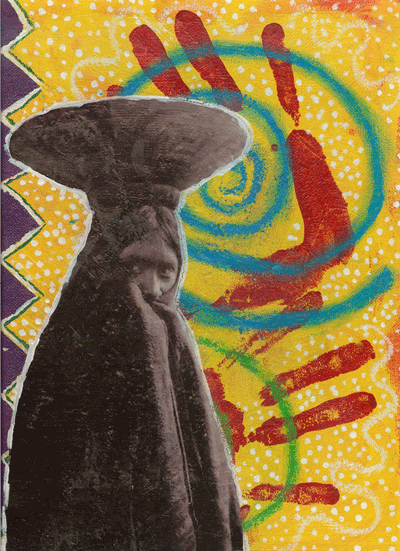
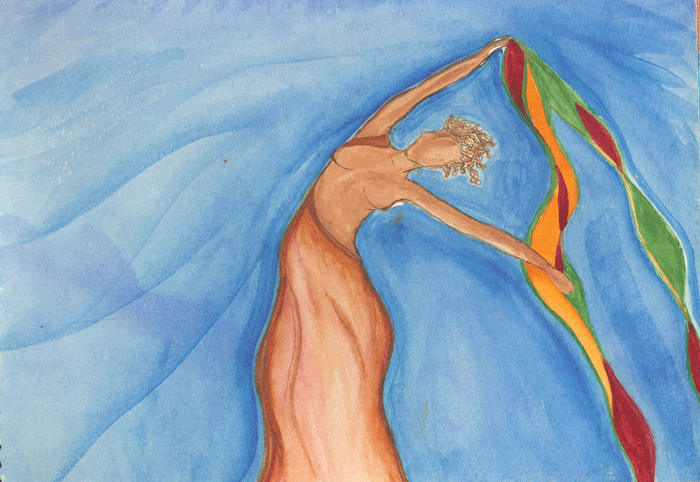










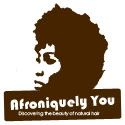

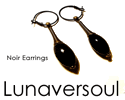


1 comments:
Good Afternoon,
I'm curious, I had a teacher back at a school called Roots ALC named Kweku Opare and I have been searching for him since he left. Could your nephew possibly be the teacher that changed my life? My name is Anthony Saxon, ask him if he remembers me, please and thank you.
Post a Comment